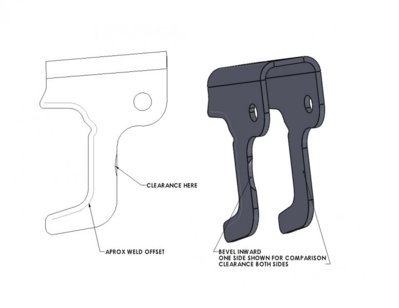Yes
Energy = Force X Distance
If we simply dropped a truck from 10 ft we could take the potential energy of the mass of the truck at that height and equate it to (force X the travel of the suspension) for it to land and dissipate the energy.
But because we are in a more dynamic and varying situation that force would be way to high and would disrupt the chassis over every obstacle so we have velocity and position sensitive shocks and bump stops. A longer, bigger, high pressure bump stop will handle massive hits better but is more likely to upset the attitude and handling of the vehicle the rest of the time.
Here is a great example:
From 1:00 to 2:30
Ford Raptor Icon Testing - San Felipe, Mexico - YouTube
The best riding truck in this video is Theresa's truck. Why? It has an aftermarket spring that removed the block which has the arm on the side that engages the factory bump and there is no bump kit. So essentially there is NO bump stop, just shock and spring. This truck has more uninhibited up travel then the rest so within a certain range it is great. The problem is that prior to this trip she broke the upper shock mount from bottoming the shock in Glamis where there are big huge jumps and hard landings. For this trip we adjusted the long compression tube on the shock to dissipate more energy so she wouldn't bottom the shock as easily but it still needs a bump and would bottom on big hits.



